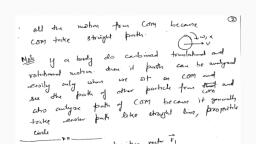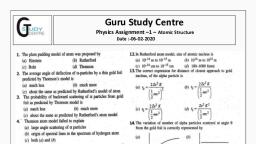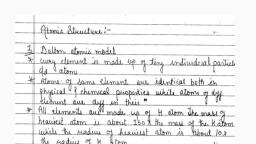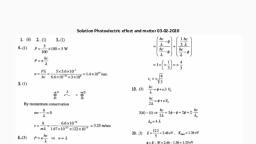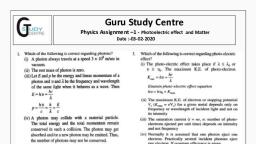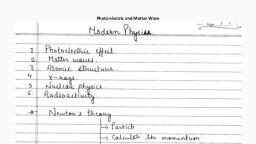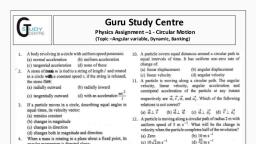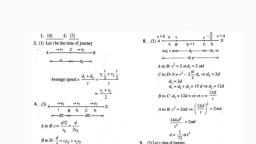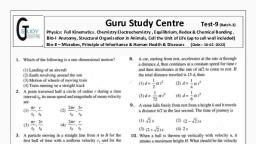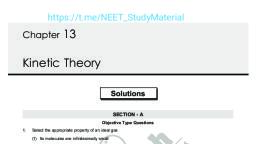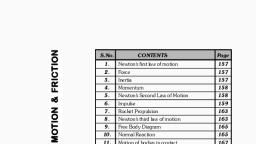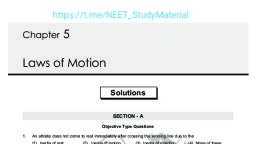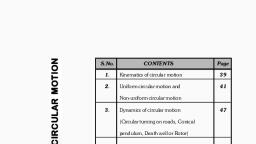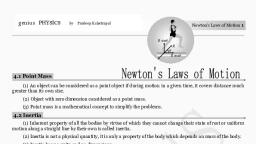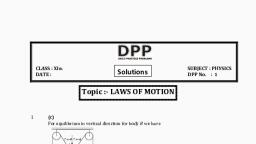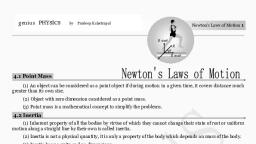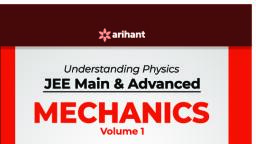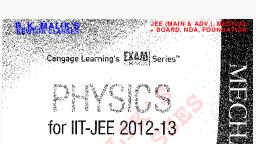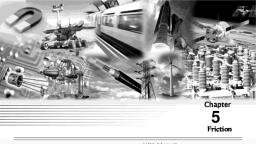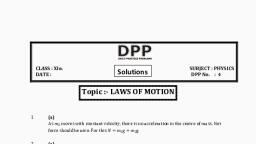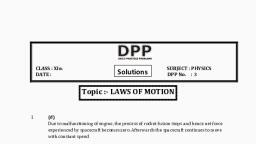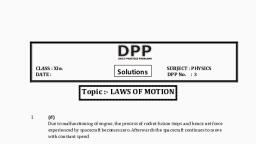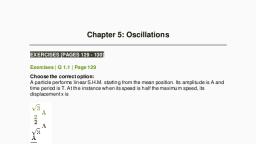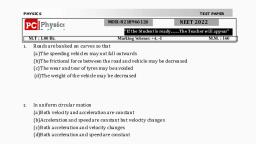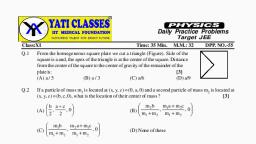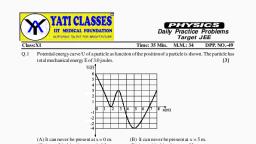Page 1 :
A, , Tage T =, , kl), , 2 cosa = 3 9, From equation (1), , 279 cosa = Me, , wager, F=3xe8, 36=3xasa=2 m/sec, , cos a =, , , , 3. al) f=6tor=10s, , 12, a= a 2, 4 3 m/s, , T-Mg=Ma, T=M(g +a), _ = 1600 (10-3) = 11200N, 4. Let h be the height of each inclined plane. then,, , the distances along the plane are s; = ae, 1, , 5) = = respectively. The accelerations of the, sind;, , block are a, = g sin 0, and a, = g sin 6, respectively., , Now, since the block is released from rest, the, , velocity of the block when it Teaches the bottom of, , the plane$ is v3 = 2a, s, and 03 = 2425, respectively,, , But 0, = ay fy and 0) = ayty or aj fh = 2a, s, and, , 3,13, = 2a, sp. These equations give, G 29%, etn” hk _sind,, f a, 5, gsin@, sind, bh, sin’ 6,, = Fras BOR, 1, sin@,, , Hence, the correct choice is (c)., , Solution, , Ss. We have, h= ; gt? When the lift is rising up, with an acceleration a, the effective vane is, , g=gtaadt is gen by h= = ¢*, Thus, , betes a, or (gta)? =gr, , 12, f= ii +4) which is choice (c)., 8, , =, , T=2a=8N, , pe OS sae, 40, , Hence option (1), , dt, For min. —=0, or min. =, 4 - 40 = 0., , => t= 1 sec. Hence option (2), , , , Fsin45°, , —_——+, , 10., , F, aoMs, , F=40/2N, Hence option (1), , N, , , , , , , , , , , , F, , , , Feos 45°, Mg, , So N, = mg, aa N, = (m, + mg, Hence option (2), , me,
Page 3 :
23, (i) fm, +m, is accelerating down (m, + m,)g ~7, = (m, +m,)a, 1. T= (my +M,) (g-0) And mg -T, = ma, , i Tem(g-a) 37,232;, , 4 (m, +1) (ga) > 3m (g ~ a), m+m,>3m,, , m,>2m, , The same rests obtaned even ifthe syste is moving in opposite do,, , The ratio of tension 7; & 7, is independent of mass m,,, , (hy, , ww,, tt, , , , , , , , , , , , movy m,, , , , , , , , T,, , m, ymg, m9, , , , , , 24, (a) : In Fig. 4.66, as horizontal forces balance,, , therefore, R = Rp., , “L, ce is, , Balancing vertical forces,, UR, +R = mg; 2pR, = 40x 10, , , , Ri 3x08 250N, , 25.,, , N=10, Sra = HN =0.5 x 10=5N, , If m=0.1 kg, mg =1N, 1N<SN, the block will not move, Friction f= 1.N, , Ifm=1kg, mg =10N, 10 N>5N, the block will move, Friction f=5.N, , uth —, N=ma, Snax = HN = ma, Uma 2=mg, , 8g, , aa, H, , From s = Lig! 2, Ac) s=ut at“ = i=, (c) + a gt, , ft, es, , As long as the coin is in the hand of the person, it, shares the acceleration of the train; it has the inertia, of motion, When he tosses the coin, it falls behind, him opposite to the direction of accelerated motion, but now it no longer shares the acceleration of the, train. Hence the correct choice is (a)., , .(d) : Refer to Fig. 4.46., , Net force on the rod, f= 32 ~ 20 = 12 N, f, , Acceleration of rod =F Dams?, m, , Let F be the force exerted by 20 cm part (weigh, ing 2 kg) on the 10 cm part (weighing 1 kg)., , +. Equation of motion of 10 cm part is, F-20=mxa=1x4, F=4+20=24 newton., , Similarly, equation of motion of 20 cm part is, , 32-F=m'a=2x4, F=32-8=24N, , . (a): If ais acceleration of block m up the inclined, , plane, then acceleration of block (2 m), downwards is a/2, Fig. 4.73.+, , Along the plane, 7’ mg sin 30° = ma



